On May 9-14, 2017, thirty-two Muslim, Christian and Jewish philosophers and scientists—from fourteen different countries—gathered at the Fetzer Institute’s Seasons retreat center in Kalamazoo, Michigan to discuss issues in science and religion. The topics presented by our preeminent senior scholars were heady and foreboding: “Pragmatic Probabilities: Dutch-Book Theorems vs. the Many-Worlds Interpretation,” “Quantum Theory and Randomness,” and “Fine Tuning in Cosmology.” But the more important challenge was breaking down our imposing national, cultural and religious barriers and building bridges across some of our world’s deepest and most painful divides.
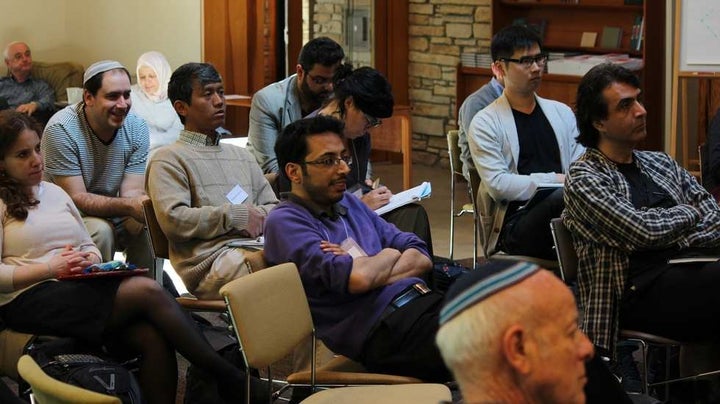
Despite some travel hiccups, everyone arrived at the Seasons in time for dinner on May 9. After dinner, to encourage mixing, we had a silly ice-breaking activity. While academics typically resist silly ice-breakers, this group didn’t. And it had the desired effect—from that moment on, we took our meals and walks together, and we had conversations with people from other faiths and countries.
We organized a similarly daunting small-group session on May 10. Although it was voluntary, everyone participated, discussing such questions as, "What does it mean to you to live a life of faith? What do you wish people knew about your faith? What do you think is most beautiful in your faith?" Although I had set aside an hour, the discussions carried long into the night. And they instigated continued sharing along these lines for the remainder of the workshop.
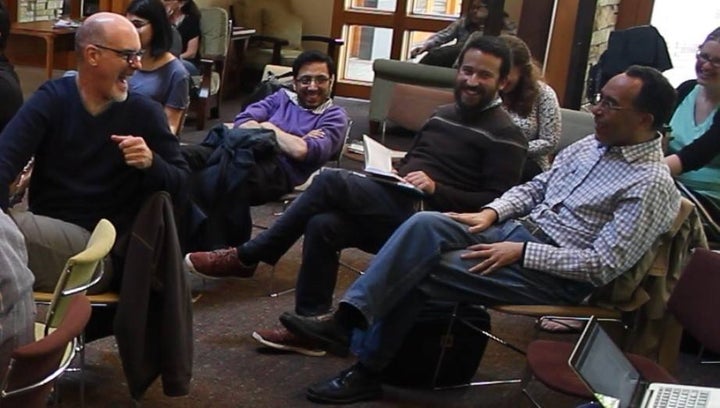
Each morning commenced with a meditation, as per the custom of Fetzer. The meditations added a spiritually uniting benefit at the beginning of each day, one that would not be broken the entire week. Although the meditations were tradition-specific, they invited people from other traditions to share in what was beautiful about each other’s faiths.
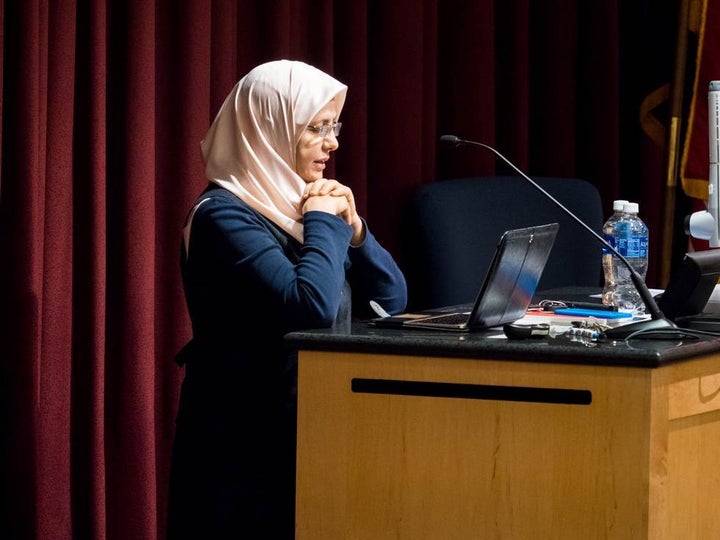
May 10 began with an introduction to Islam, led by Yamina Bouguenaya and Shalahudin Kafrawi. Yamina’s calm and inviting presence set the tone for the conference.
We took our lunch, as we did all our meals, together. Meeting at the Seasons forces everyone to be together all of the time except for sleeping. I’ve learned that the magic happens over meals, on the deck, and after the sessions – when people set aside their barriers and let others in. Since this difficult for academics, academic protocols (argument-rebuttal) were well-displayed early on. But kindness and eagerness to work and learn together took over, due in no small part to getting to know each other as human beings.
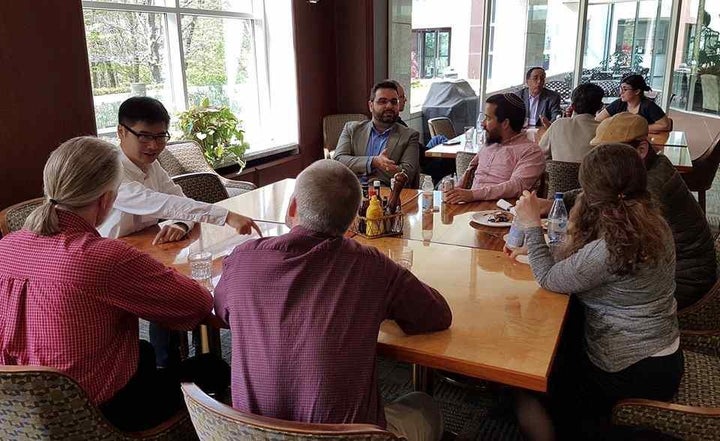
I gave the first academic lecture, “Is God a Bowler or a Curler?,” deciding to err on the side of retention and humor. The positions I outlined were referred to throughout the workshop, and the humor contributed to a spirit of intellectual humility and self-deprecation (that one needn’t take one’s own views too seriously).
Over the next few days, our senior scholars gave their informative presentations.
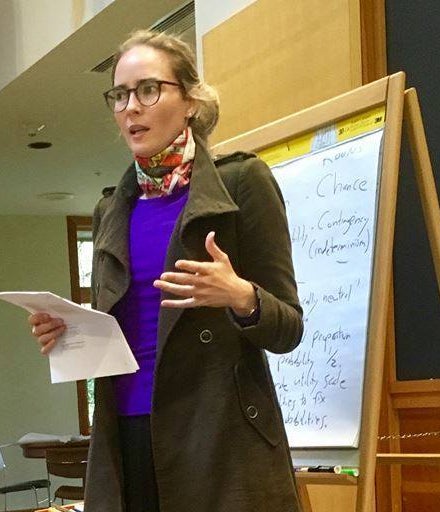
On Saturday, May 13, the group traveled to Grand Rapids for public presentations by members of our project at Grand Valley State University’s annual “Grand Dialogue on Science and Religion.” Scott Davison gave the keynote, “Science, Faith, and Answers to Prayer,” followed by responses from Yamina Bouguenaya and Nathan Aviezer
The breakout sessions at the Grand Dialogue included such topics as “God and Evolution: Interfaith Perspectives,” “Islam and Providence,” “Ventures of Adam in the Quran,” “Mythbusting: What they didn't teach you about science and religion,” and “Islam and Violence/” The audience of about 200 enthusiastically enjoyed every aspect of the Grand Dialogue’s multi-faith exploration of issues in science and religion.
We also used the Dialogue as an opportunity to honor Alvin Plantinga for his Templeton Prize.The hoped-for intellectual stimulation and scholarly buy-in was, again, beyond my wildest imagination. On our last morning together, the participants divided into multi-faith teams. These teams will work and meet together over the next two years to write chapters for two books.
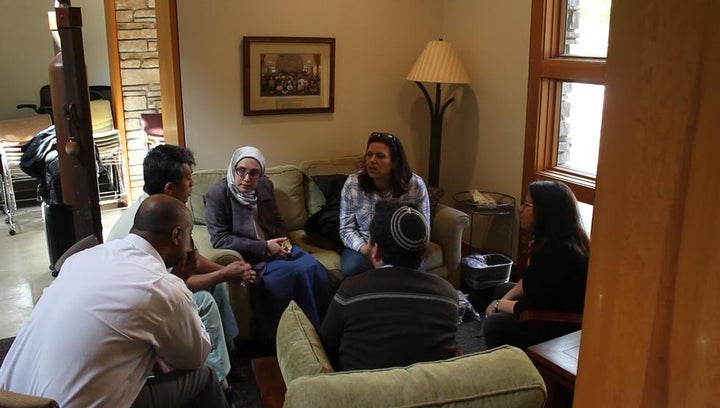
Finally, everyone was inspired to work together not only with other participants but with Muslims, Christians, and Jews in their home communities. While exploring how to take these multi-faith ideas into our classrooms and communities will be more central over the next two years, everyone was motivated to move on to this next crucial step.
Let me conclude with an anecdote which sums up the week for me. The workshop included scholars from the three Abrahamic religions from all over the world. There was, as expected, some initial suspicion, wariness and distrust even. Many sat with those in their own faith groups for the first few sessions. And then the week happened. On the last day, as everyone stood up to say their goodbyes, everyone embraced—Muslim, Christian and Jew hugged one another. The week had worked.
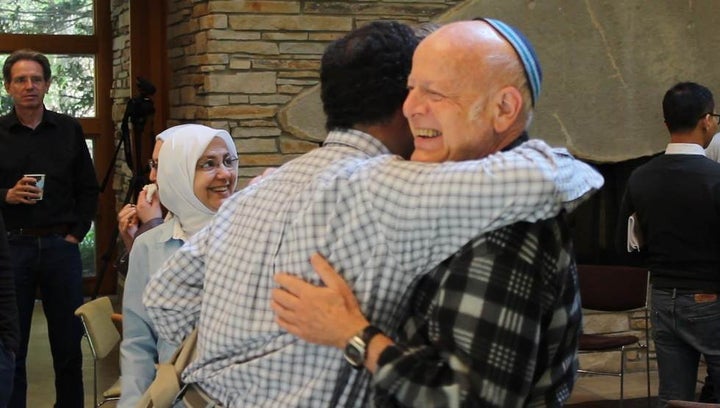
We are grateful to the John Templeton Foundation for their generous support for this three-year project.
And to the Fetzer Institute for fully funding this workshop.